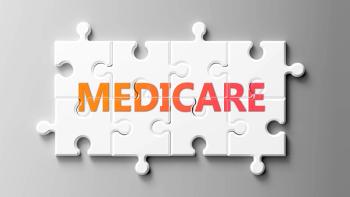
The End of Continuous Medicaid Enrollment Is Near. Are States and Their Workers Ready?
States need to prepare for the onslaught of work related to Medicaid enrollment and redeterminations with continuous enrollment scheduled to end on March 31.
Since February 2020, enrollment in Medicaid and the Children’s Health Insurance Program (CHIP) increased more than 27%, to 90.6 million as of August 2022, according to the
But as part of the omnibus spending bill that President Joe Biden signed in late December, Congress set an end to the continuous enrollment provision on March 31, 2023. As the Kaiser Family Foundation explained, the spending bill effectively decoupled continuous enrollment from the PHE.
States will need to make eligibility redeterminations, which will mean a massive workload for the public servants who support Medicaid programs. The stakes will be incredibly high. The Urban Institute has estimated that as many as 18 million people could lose Medicaid coverage with the end of continuous enrollment.
The amount of administrative work associated with the unwinding will create a perfect storm, of sorts, as it will coincide with the country’s ongoing labor challenges and a likely recession in 2023.
To help ease the strain on the Medicaid program and state employees, there are some areas of opportunity that could ease the transition away from continuous enrollment while ensuring continuation of coverage for those they serve.
Resolve enrollee confusion with flexibility and innovation
The anticipated high volume of incoming inquiries from Medicaid enrollees has the potential to further exacerbate workforce struggles during a critical period. As states look to recruit and train new employees to grow their call center staff, creativity and flexibility will be essential to managing the influx.
Remote work has become a new norm for many industries since the onset of the COVID-19 pandemic. To expand their capacity to support enrollees, some states have been successful in rescinding requirements that demand call center employees live in-state. States that currently prohibit out-of-state hires may opt to consider removing these constraints to ease local labor shortages and employee burnout. Additionally, having call centers staffed across time zones could also offer more opportune times for Medicaid recipients to get the support they need.
Enhance service to enrollees through automation
In many ways, COVID-19 accelerated digital transformation to ensure critical patient programs remained operational. The unprecedented level of innovation that came out of the pandemic created opportunities to deliver healthcare services more intelligently than ever before.
Some states have applied a risk-based model to identify, safeguard and streamline the systems and processes that cannot fail and are highly labor intensive. From identification to outreach, most states are working diligently on optimization measures and making it a priority to automate as many processes as possible — especially tasks that don’t require human intervention — to reduce errors and increase efficiency.
As automation eases burden on staff by reducing time spent on repetitive tasks, employees have more bandwidth to provide high-touch, complex assistance to enrollees and respond to their questions.
Dealing with PERM. Be as proactive as possible to avoid errors
Reducing the
The risk of payment errors will increase during the unwinding as an influx of new employees receive training to support the expected surge of work. Given the increased work volume and decreased resources, the creation of an in-process, preaudit function will be essential to help reduce the risk of errors. States could ensure higher rates of accurate redeterminations by proactively self-auditing their processes. Additionally, having a comprehensive redetermination quality oversight plan in place that assesses accuracy in real time would enable states to correct payment errors more efficiently if one is caused by an operational challenge.
Outsourcing as a way to serve the common good
Advances within the Medicare appeals program over the past 10 years have benefited the federal government greatly by empowering its ability to operate more effectively. These advances are thanks to the consistent innovation of traditional processes being done by CMS. With this playbook, we can also look within the Medicaid ecosystem for areas that could be reassessed and reinvigorated in the same way.
To free up pressure on state resources and best ensure that redeterminations are properly staffed, states may opt to identify administrative and repetitive transactions that could be automated or subcontracted. This would play a key role in ensuring that the population’s most vulnerable members are correctly determined to be eligible for Medicaid coverage or are allowed to obtain insurance through government exchange programs.
The unwinding calls for bold solutions, and for those solutions to work, they must be supported and executed by numerous government entities.
Integration of eligibility and enrollment to ease the burden on recipients
As people must typically apply for Medicaid and CHIP, food stamps, and social services through several different agencies and departments, some states are strategizing ways to simplify and centralize these processes. The state of California is a prime example. It is currently developing
Investing in a foundational change now to streamline the enrollment process across these programs could ease the burden on recipients and staff over the long term.
Karen Shields is the chief client engagement officer for
Newsletter
Get the latest industry news, event updates, and more from Managed healthcare Executive.





















































